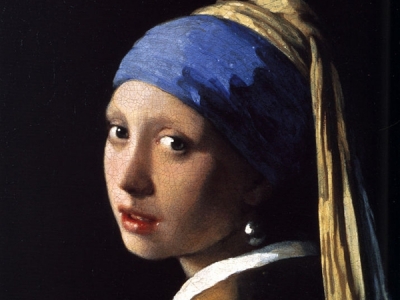
In 1999, American author Tracy Chevalier published Girl with a Pearl Earring, a novel directly inspired by one of Vermeer’s most famous works of the same name. Set in 17th century Delft, Holland, Chevalier presents a fictional account of Vermeer, the girl in the painting and the artwork itself.
Girl with a Pearl Earring portrays a young woman sitting before a dark backdrop. Though seemingly inconsequential, this stark and shallow background beautifully contrasts the figure’s cream-colored skin and translucent eyes, which are fixed on the viewer. In addition to an exquisite blue and yellow turban, she dons a large, tear-shaped pearl earring.
While, on the surface, this depiction seems to have the classic characteristics of a portrait, it is actually known as a tronie. Popular during the Dutch Golden Age, a tronie is a painting of an individual intended as a study. Often, artists opted to portray these figures in “exotic” garments, as rendering opulent fabric allowed them to show off their advanced painting techniques.
Vermeer is known for his ability to create contours and forms using light rather than line. This distinctive approach to modeling is particularly evident in the figure’s face, which Vermeer rendered in planes of light and shadow. To achieve this aesthetic, Vermeer followed a meticulous four-step technique popular with 17th-century artists.
First, he would “invent,” or create an initial drawing on the canvas. Then, he crafted a monochromatic underpainting—a technique known as “dead-coloring.” Next, he added color. And, finally, in order to make the piece exceptionally luminous, he would apply a thin layer of glaze to certain parts of the painting. A recent restoration has revealed that he glazed two areas of Girl with a Pearl Earring: the blue section of her turban and the entire background (which, originally, would have been an opalescent green).
Picture Credit : Google

